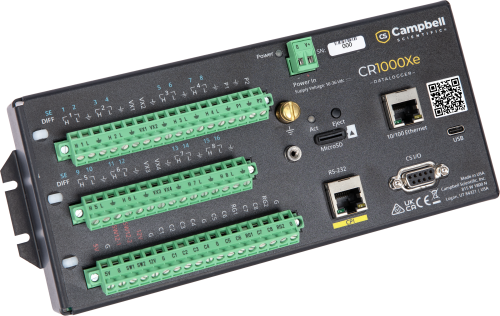Was wir tun
Ein System maßschneidern
Zusätzlich zu unseren verfügbaren Standardsystemen bieten wir auch viele maßgeschneiderte Systeme an. Sagen Sie uns, was Sie brauchen, dann helfen wir Ihnen, ein System zusammenzustellen, das genau Ihren Bedürfnissen entspricht.
Ähnliche Produktkategorien
Weitere Details über unsere Surface Water Monitoring Instrumentation Systeme
Measuring Water Level
Our systems use 6-wire resistive gages or vibrating-wire pressure transducers for measuring groundwater level. In deep observation wells, these pressure transducers provide accurate water level measurement. We use piezometers, bubblers, or float and pulley systems to measure water level in shallow water applications. On the high end of groundwater level measurements, our portable pump and slug test systems can simultaneously measure water level in up to 8 wells, yet are easy to setup and customize from site to site.
For surface water level, measurements are often made in a vertical stand-pipe (stilling well) installed adjacent to a lake, river, or stream. The stream level (stage) is the same as the water elevation in the stilling well. A float and pulley is often used, but pressure transducers, ultrasonic, and resistive tape sensors work well also. Self-calibrating double bubblers are accurate sensors for measuring water level, and have the added benefit of keeping the sensor out of the measured liquid—critical in corrosive environments.
Measuring Water Flow
Water flow is usually calculated using a structure built across an open channel, such as a weir or flume. The water level is measured as it flows through the structure. Discharge rates are determined by using a site-unique rating curve and the water level. A float and pulley system, strain gage pressure transducer, or ultrasonic sensor may be used in stilling wells to measure water level fluctuations, then calculate flow.
New sensors that use ultrasonic and Doppler technologies to measure water velocities in two or three dimensions are also available. Velocity is measured directly; additional calculations are not required.
Data Loggers for Water Level and Flow Measurements
The versatility of our data loggers allows systems to be customized for each application. A range of data loggers, with increasing capabilities, is available. All our data loggers feature wide operating temperature ranges, low power consumption, and the ability to directly interface with a large variety of sensors. Because our data loggers operate on batteries (with or without solar panels), they are ideal for long-term, stand-alone operation, such as at remote stilling wells. If additional channels are needed, most of our data loggers are expandable using multiplexers and other peripherals. Powerful on-board instruction sets allow unattended control decisions based on time or conditional events. For example, if measured levels are outside a predetermined range, the data logger can sound alarms, open valves or gates, or call out to a phone to report conditions. Data are typically displayed and stored in the desired units of measure (e.g., cfs, psi, feet, inches, meters, centimeters).
Sensors for Water Level and Flow Measurements
Thanks to their ability to measure multiple channel types, our data loggers can read nearly every commercially available sensor, allowing systems to be customized for each installation. We offer a variety of water level and flow sensors that feature low drift and high reliability. In addition, nearly all available water quality and meteorological sensors can be measured, generally without external signal conditioning. We helped create the original SDI-12 standard, so you can be sure our systems are SDI-12 compatible.
Communications
The availability of multiple telecommunications and on-site options for retrieving data also allows systems to be customized to meet exact needs. Off-the-shelf telecommunications options include satellite (DCP), radio, telephone, cellphone, and voice-synthesized phone. Systems can be programmed to send alarms or report site conditions by calling out to computers, phones, radios, or pagers. Real-time or historical data can be displayed or processed with Campbell Scientific software. Data can also be exported as ASCII files for further processing by spreadsheets, databases, or analysis programs.
Dokumente
Broschüren Produkte
Technische Artikel
Realisierte Projekte
Anwendungsbeispiele
In August 2012, RESPEC was contracted to provide field instrumentation and early-warning monitoring services at......lesen Sie mehr
Overview The existing port of Limon was constructed over 30 years ago. With the increase of......lesen Sie mehr
ALERT2 is a modern communication protocol that improves upon 40 years of tradition within the......lesen Sie mehr
RESPEC, a water-resources consulting and services firm, is currently under contract to operate and maintain......lesen Sie mehr
Currently, the Andean tropical glaciers are in an accelerated process of retreat. These glaciers are......lesen Sie mehr
Horseshoe Irrigation is a small rural irrigation company in central Utah, managing approximately 15,000 water shares......lesen Sie mehr
Moving clean, cold water through a trout-rearing facility is essential to its success. A live......lesen Sie mehr
In 2010, Trenton and Amalga, two northern Utah towns separated by only a few miles,......lesen Sie mehr
Ähnliche Links
Artikel und Pressemitteilungen
Privacy Policy Update
We've updated our privacy policy. Learn More
Cookie Consent
Update your cookie preferences. Update Cookie Preferences









